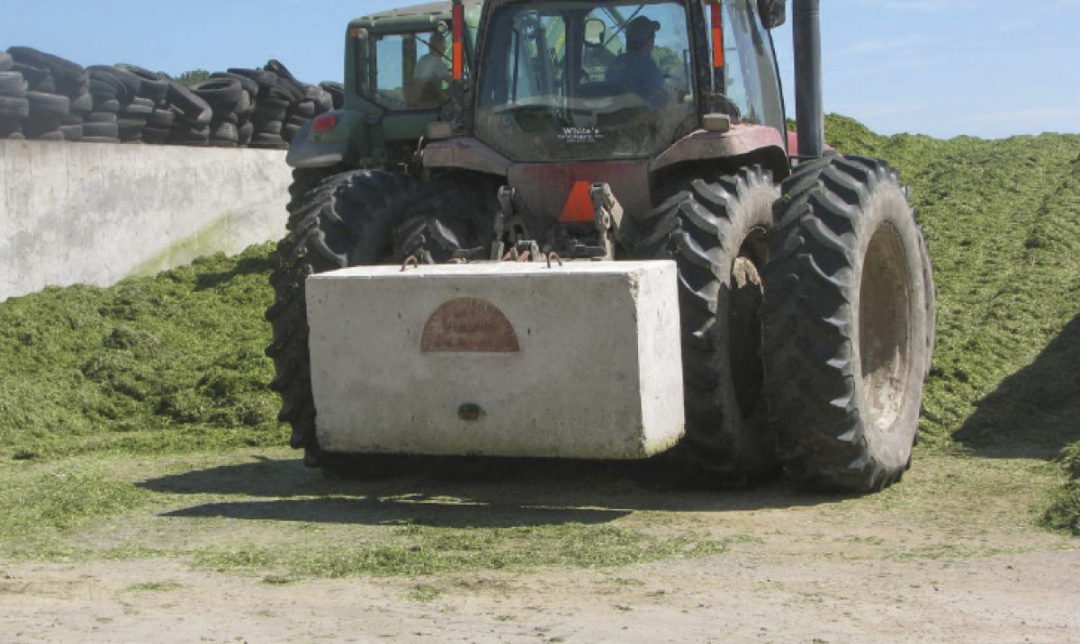The cost of crop inputs and common feed ingredients used in dairy rations has dominated many discussions this past year. A commonality in growing crops and feeding cows is the need to balance cost and efficiency with production and return on investment. A number of fixed costs are associated with both tasks and it is critical to evaluate if potential cost-cutting measures will end up costing more than they save through declines in production.
Many growers spent the spring of 2022 searching for adjustments that could be made, and while there may be some marginal relief in areas such as fertilizer prices, higher costs look to continue to 2023. While the lessons learned from 2022 will be helpful to develop successful strategies for the 2023 season, it is important to determine which changes made in 2022 can continue without hurting production, and which ones may have been feasible in the short-term but cannot be used continuously without negative impacts, such as drawing down nutrient levels in fields identified to have higher soil test levels.
Within the discussion of managing feed cost, optimizing forage quality is often discussed, and it certainly is an important strategy. Beyond measures of nutritional quality, when considering managing cost, working to minimize shrink losses in our feeding system is often overlooked. When each ton of forage costs more to grow, the value of the losses also increases, increasing its impact on overall cost.
With fermented forages, some level of silage shrink is unavoidable, which is attributed to dry matter (DM) losses through the fermentation process itself. In the best scenarios, total shrink in fermented forages can near 10 percent. The real opportunity exists in all other areas of the ensiling process where both yield and quality are lost. Many of those practices also help to assure the best possible fermentation, which helps reduce the fermentation losses to the lowest feasible levels.
Harvest
The threat for losses in the hay harvest process are greater than in corn silage, though both systems can experience avoidable losses.
CORN SILAGE
Much of the focus for harvesting corn silage is on the balance of kernel maturity and whole plant DM to optimize nutritional value, yield, and proper storage. While harvest timing is the final factor, critical steps are needed much earlier in the process, including selecting correct relative maturity hybrids that provide the best chances the crop will reach optimum harvest maturity for a specific geographic area.
HAY CROP - RESPIRATION LOSSES IN THE WINDROW
When a plant is cut, it continues to respire. This aids the drying process but also burns plant sugars and reduces overall yield. Studies report respiration losses of one to seven percent of dry matter (DM) yield. Plant sugars provide an important food source to the microbes, responsible for proper fermentation. Therefore excessive losses of sugars during the drying process have the combined impact of reducing yield and quality while also increasing the risk of improper fermentation.
Respiration losses can be minimized by shortening the time mowed hay remains in the windrow prior to harvest. One of the most significant management factors to control this is maximizing windrow width to allow as much exposure to sunlight as possible. Windrows should be a minimum of 80 percent of cutter bar width and preferably more.
Other factor to consider include;
- No conditioning. Some studies show this speeds the silage drying process, though it is not recommended for dry hay. It also tends to be more beneficial in alfalfa than grass.
- Increase cutting height. Increasing cutting height comes with the tradeoff of leaving more material in the field but can result in higher quality and less harvest losses, particularly in the spring when the soil is still damp, which slows drying.
Speeding the drying process has the additional benefit of reducing weather associated risk. Dry matter losses from hay rained on in the windrow are reported to range from three to 50 percent, with as little as 0.2 inches to 2.0 inches, respectively.
HAY CROP - LEAF LOSS
Particularly with legumes, leaf-loss through tedding, raking, and harvesting can be significant, reducing both quality and yield. Losses are generally most significant when the crop becomes too dry prior to the completion of these tasks. Practices to encourage uniform and rapid drying of the windrow, as well as proper setup of hay handling equipment will minimize these losses. Finally, harvesting at the correct DM minimizes losses. Particularly when chopping forages, losses in drier hay crop silage can add up, but can also exist when baling.
TRANSPORTATION LOSSES
Losses during the transportation process may seem insignificant, however, they too can add up, particularly in drier silages and when transported at higher speeds as is more common with the increasing use of trucks. Additionally, theses losses can create safety and public perception concerns when forages blow onto roadways. Evaluate the use of forage box covers to minimizes these losses.
Storage
After managing the hurdles to get the maximum yield and quality out of the field, storage represents the next challenge and opportunity. Managing these opportunities starts as soon as the forage is delivered to the storage, and continues through feedout. Horizontal silos (bunk and drive-over piles) continue to gain popularity given their logistical advantages for large quantities of forage but can also present the most challenges to maintain forage quantity and quality.
FORAGE DRY MATTER
Ensiling within an accepted DM range can aid the fermentation process. For most silages, a forage DM close to 35 percent is suggested to optimize yield, quality, and fermentation. While it is possible to achieve proper fermentation over a range of DM content, being too dry or too wet significantly increases the risk of something going wrong in the fermentation process. Further, storage structure can impact the optimum DM range with a slightly greater DM generally favored for upright silos and baleage.
EXCLUDING AIR AND WATER
Air and water are essential to life but are enemies of forage fermentation. In all fermented forages, focus should always be on achieving high silage densities to exclude oxygen and maximize the quantity of forage stored within a storage.
FERMENTATION OF LEGUMES
Legumes present additional challenges to achieving optimum fermentation. Legumes tend to be lower in plant sugars than grass, and also have a greater buffering capacity, which makes it more difficult to drop the pH to desired levels. Additionally, hay crops and specifically legumes can be more difficult to spread into thin layers and adequately pack into a horizontal silo. Understanding these added challenges can help ensure steps are taken to mitigate them.
 |
This article appeared in PRO-DAIRY's The Manager in March 2023. To learn more about Cornell CALS PRO-DAIRY, visit PRO-DAIRY. |






